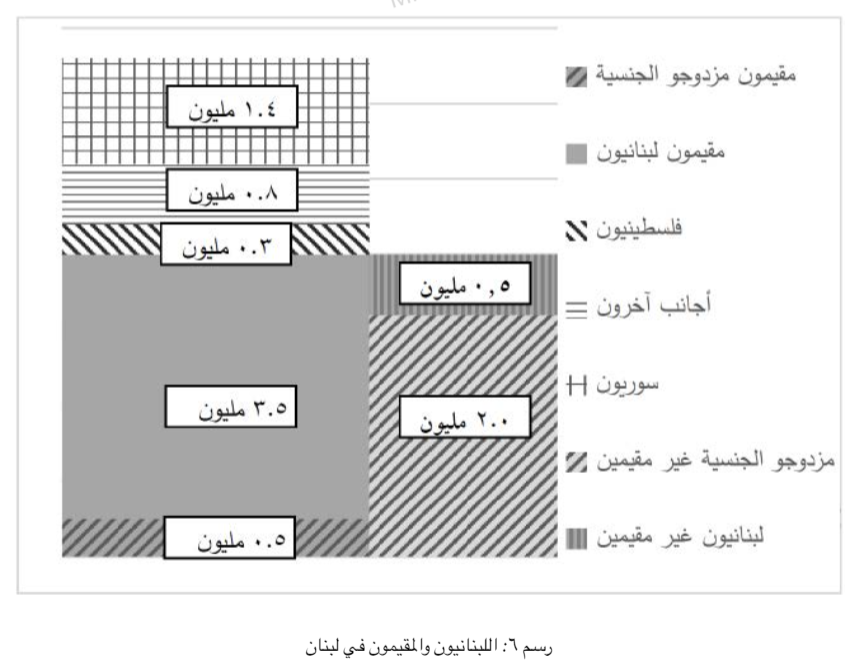Social transformation
In light of this political and economic system that began in the mid-1980s, the country witnessed massive immigration and the number of arrivals to Lebanon increased. The number of Lebanese immigrants became equivalent to two-thirds of the number of residing Lebanese. The number of non-Lebanese residents also reached two-thirds of the number of Lebanese residents. This led to a significant change in the age structure of residents between 1997 and 2009. Lebanese under the age of 20 represented 34% of the residents, while this percentage reached 57% among Syrian refugees.
Based on this, we see that the reality of the Lebanese social and economic scene, before the outbreak of the current crisis, has become completely different from the common idea that the Lebanese had in mind. Workers in the formal sector constitute only 29% of the workforce, with 19% informal wage earners. Unemployment is particularly high among women, and it increases with the level of education (noting that unemployment rates are calculated only among those who have not emigrated).

